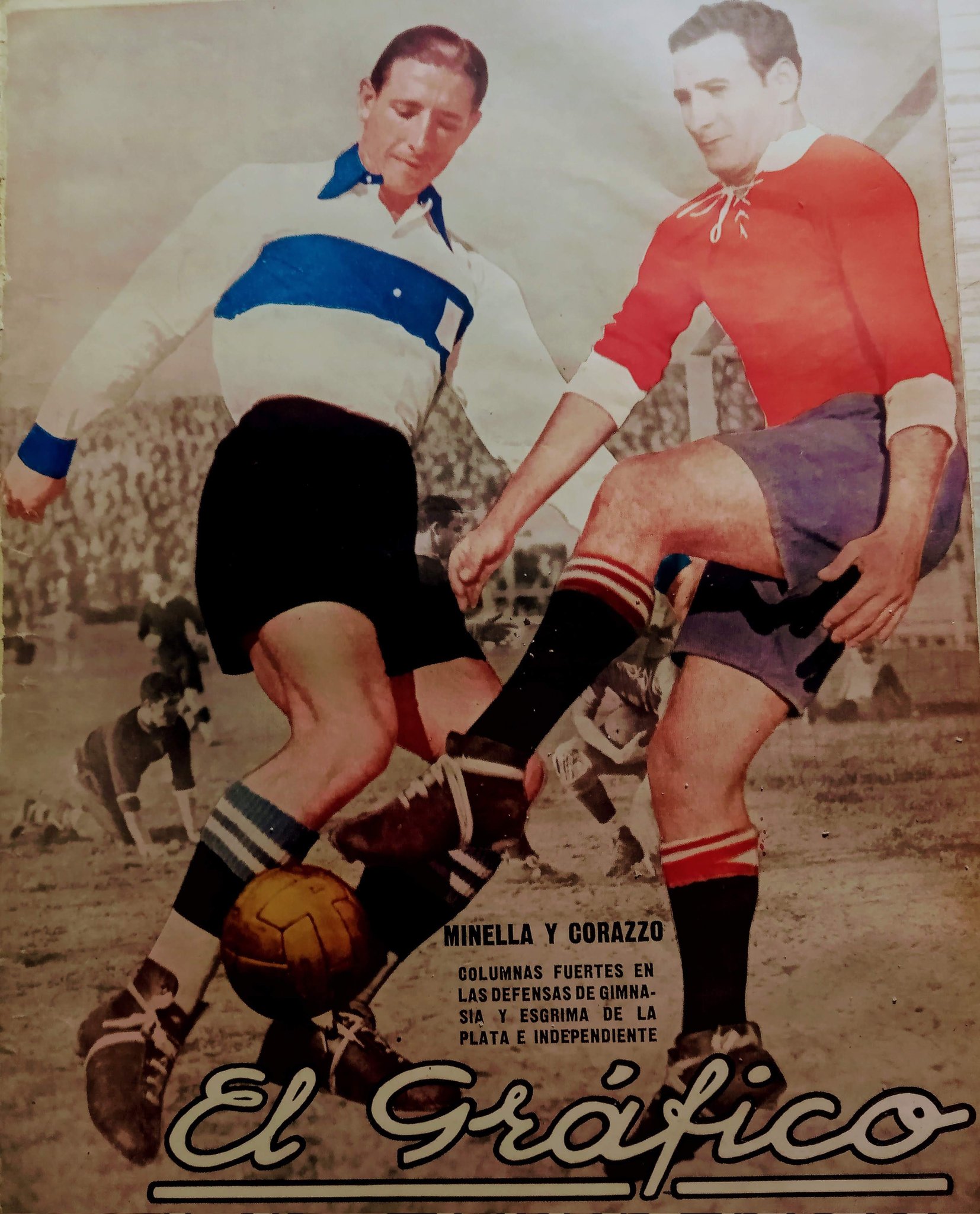
El título lo tomé prestado de un emotivo libro de Carlos Droggett donde narra la historia de un muchacho que se refugia en el departamento de un amigo para vivir el día más horrendo y sanguinario de la historia de Chile, el 11 de setiembre de 1973.

Sin embargo, mi historia es bien distinta, solo me gustaron esas palabras porque trata del paso de los años y como las cosas van cambiando, en general porque el mundo y las personas que vivimos en el cambiamos, ya sea por decisión propia o para acomodarnos a las nuevas modas y gustos, los adelantos científicos y técnicos y nuestra propia realidad.
Pocos días atrás, cuando con el amigo @palabras1 comenzamos a darle forma a un podcast del que veníamos hablando y planificando desde al menos un par de meses, surgieron temas relacionados con nuestras primeras aproximaciones al deporte, las mías por supuesto más atrás en el tiempo, cuando la TV recién comenzaba a posicionarse como uno de los aparatos que cambiarían la percepción y la forma de informarse de variados temas, entre ellos por supuesto las actividades deportivas. Ni menciono las redes sociales, los teléfonos inteligentes y otros adelantos que han dado una nueva vuelta de tuerca a la información y a las relaciones en los últimos tiempos.
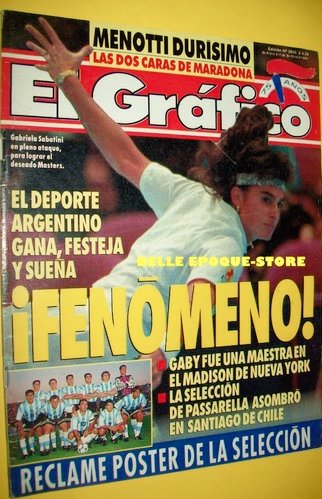
Por aquel entonces la radio, los periódicos y las revistas dominaban el espectro informativo y eran prácticamente las únicas formas de enterarnos de cualquier cosa.
En cuanto a los deportes recuerdo una gran revista llamada El gráfico, a la que por supuesto le habían salido varias a competir, orientadas en el mismo sentido y que deseaban quedarse con un pedazo de la torta del negocio de informar sobre esta importante actividad humana, algunas que recuerdo fueron: Goles, Mundo deportivo, Solo Fútbol y otras, la que más perduró en el tiempo compitiendo por las preferencias del público fue Goles, pero la calidad informativa, el gran plantel de periodistas y el despliegue de producción de la primera acabó por hacer fracasas esos intentos.
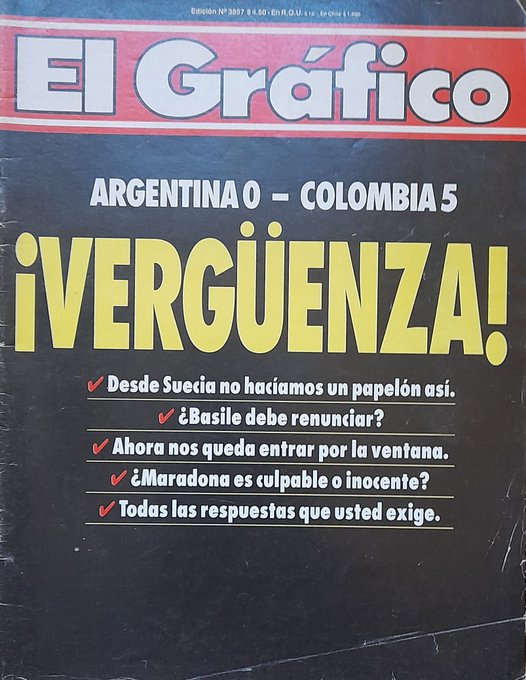
El Gráfico fue en sus orígenes allá por el año 1919, una revista que tocaba temas de interés general, sin una editorial definida, sin embargo, su creador Constancio Vigil, supo darse cuenta de la importancia que el deporte tenía en el acervo criollo, algo parecido a lo que nuestro querido fundador @fermionico hizo al crear este feed, y de a poco fue volcando en sus páginas más y más información deportiva hasta que la convirtió en tema excluyente.
La revista fue convirtiéndose de a poco en un referente de suma importancia, incluso influyente, el todo el amplio abanico deportivo de mi país y cada lunes por la noche, miles de lectores esperaban ansiosos la salida de su edición semanal que por supuesto contenía las últimas noticias, comentarios, fotografías y opiniones de lo acontecido en el fin de semana. Aunque Ustedes no lo crean, en los años 40,50, 60 y hasta 70 y 80, la mayoría de los deportes profesionales solo se desarrollaban en los fines de semana. Excepción hecha del beisbol por supuesto, aunque por estas latitudes ese deporte no estaba en el radar del público y por supuesto tampoco de la revista.
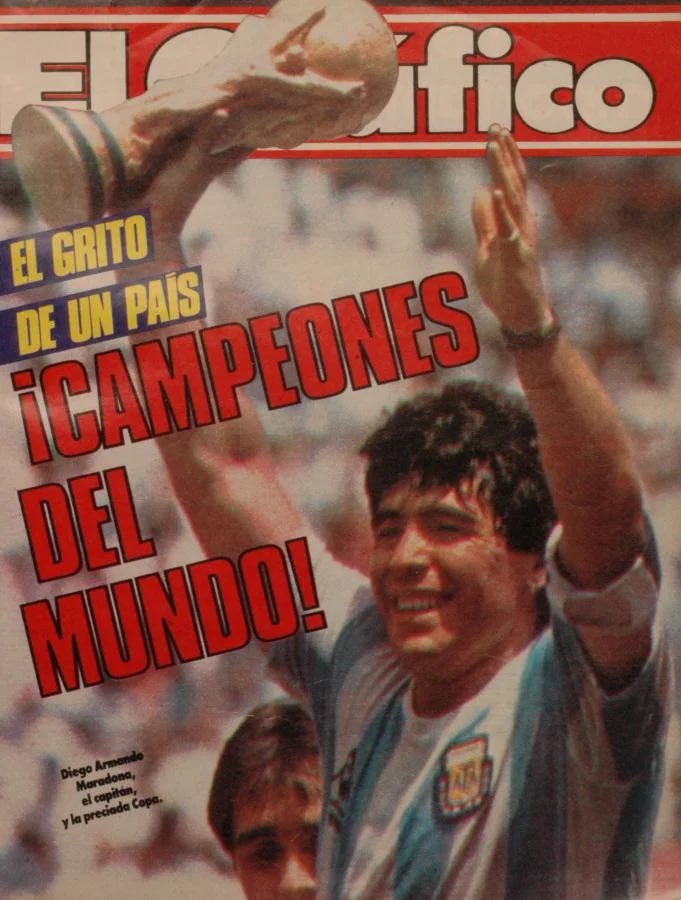
Por más de siete décadas fue la revista deportiva más importante de Sudamérica y estaba entre las tres más importantes del mundo, por su calidad gráfica y periodística, por su tirada, por la cantidad de lectores y también por la diversidad de deportes que trataba. Según se comentaba, cuando un argentino viajaba a Europa y leía Guerin Sportivo, Sports Illustrated o Don Balón, una mezcla de decepción y orgullo recorría su ser, estas revistas no se acercan en nada a la calidad y producción de El Gráfico; otros países de la región compraron los derechos para editar El Gráfico con información orientada a su mercado local, recuerdo el caso de Perú, por ejemplo.
Solo para poner ejemplos concretos, la edición del campeonato mundial de 1978 tuvo una tirada de 650.000 ejemplares y la del 86 con la foto de Maradona sosteniendo el trofeo de 850.000 en ambos casos la cantidad de ejemplares impresos alcanzaron al máximo que la tecnología les permitía en esos momentos. Los directivos aseguran que tranquilamente podrían haber impreso el doble o más y aun así habrían vendido todo.

Pero como para todo y todos, el tiempo pasa y nos vamos poniendo viejos, como dice la canción, pese a luchar contra los grandes avances en trasmisiones deportivas, las cadenas internacionales y también, por qué no, el giro de las personas hacia la información instantánea con gran calidad gráfica de fotografías y videos, El Gráfico fue perdiendo su pelea por puntos, como tantas veces sus páginas comentaron peleas de boxeo.
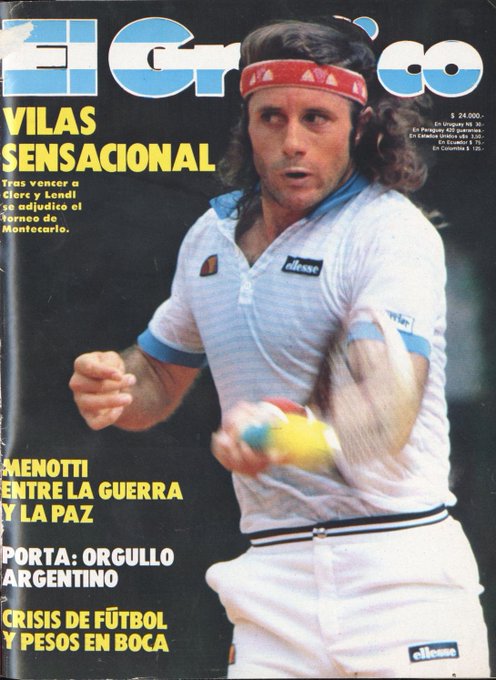
En las últimas dos décadas la editorial fue viendo cómo se perdía ante tanta información gratis e instantánea, incapaz de encontrar una nueva fórmula que le permitiera resurgir y mantenerse, desde hace varios años ya no se imprime en papel, solo existe una edición digital que navega casi en la intrascendencia y que probablemente la lleve a una desaparición forzada.
Todavía hay un importante mercado de ejemplares usados, poseer algunas de esas revistas es tener una gran parte de la rica historia de nuestro deporte, de nuestros muchos éxitos y también de algunos fracasos rotundos, nacionales e internacionales. Seguramente por ahí estarán perfectamente ubicadas en los estantes de coleccionistas, algunas de las gestas más gratas del deporte argentino, ¡que envidia!
As the years go by
I borrowed the title from an emotional book by Carlos Droggett where he tells the story of a boy who takes refuge in a friend's apartment to experience the most horrendous and bloodthirsty day in the history of Chile, September 11, 1973.
However, my story is very different, I only liked those words because it is about the passing of the years and how things change, in general, because the world and the people who live in it change, either by our own decision or to accommodate ourselves. to new fashions and tastes, scientific and technical advances, and our reality.
A few days ago, when my friend @palabras1 and I began to shape a podcast that we had been talking about and planning for at least a couple of months, topics related to our first approaches to sport arose, mine of course further back in time. , when TV was just beginning to position itself as one of the devices that would change the perception and way of being informed about various topics, including, of course, sports activities. I don't even mention social networks, smartphones, and other advances that have given a new twist to information and relationships in recent times.
At that time radio, newspapers, and magazines dominated the information spectrum and were practically the only ways to find out about anything.
As for sports, I remember a great magazine called El Graphic, which of course had several competing, oriented in the same direction and who wanted to keep a piece of the pie of the business of reporting on this important human activity, some that I remember were: Goles, Mundo Deportivo, Solo Fútbol and others, the one that lasted the longest competing for the public's preferences was Goles, but the quality of information, the large team of journalists and the production deployment of the first ended for making those attempts fail.
El Grafico was originally a magazine back in 1919 that covered topics of general interest, without a defined publisher. However, its creator Constancio Vigil knew how to realize the importance that sport had in the Creole heritage, something similar to what our beloved founder @fermionico did when creating this feed, and little by little he poured more and more sports information into his pages until he turned it into an exclusive topic.
The magazine gradually became a very important, even influential, reference for the entire wide range of sports in my country and every Monday night, thousands of readers anxiously awaited the release of its weekly edition, which of course contained the latest news, comments, photographs and opinions of what happened over the weekend. Believe it or not, in the 40s, 50s, 60s, and even the 70s and 80s, most professional sports only took place on weekends. Except for baseball of course, although in these latitudes that sport was not on the radar of the public and of course neither of the magazines.
It was the most important sports magazine in South America for more than seven decades. It was among the three most important in the world, due to its graphic and journalistic quality, its circulation, the number of readers, and also for the diversity of sports it covered. According to what was said, when an Argentine traveled to Europe and read Guerin Sportivo, Sports Illustrated or Don Balón, a mixture of disappointment and pride ran through his being. These magazines are nowhere near the quality and production of El Grafico; Other countries in the region bought the rights to publish El Gráfico with information aimed at their local market, I remember the case of Peru, for example.
Just to give specific examples, the 1978 edition of the world championship had a circulation of 650,000 copies and that of '86 with the photo of Maradona holding the trophy had a circulation of 850,000. In both cases, the number of printed copies reached the maximum technology allowed them in these moments. The managers assure that they could easily have printed twice as much or more and still would have sold everything.
But like with everything and everyone, time passes and we are getting old, as the song says, despite fighting against the great advances in sports broadcasting, international networks, and also, why not, the turn of people towards information snapshot with the great graphic quality of photographs and videos, El Grafico was losing its fight on points, as so many times its pages commented on boxing fights.
In the last two decades, the publisher has seen how it was lost in the face of so much free and instant information, unable to find a new formula that would allow it to resurface and maintain itself. For several years now it has no longer been printed on paper, there is only a digital edition that navigates almost inconsequential and that will probably lead to a forced disappearance.
There is still an important market for used copies, to own some of those magazines is to have a large part of the rich history of our sport, of our many successes and also some resounding failures, national and international. Surely some of the most pleasant feats of Argentine sport will be perfectly located on collectors' shelves, what envy!
Héctor Gugliermo
@hosgug